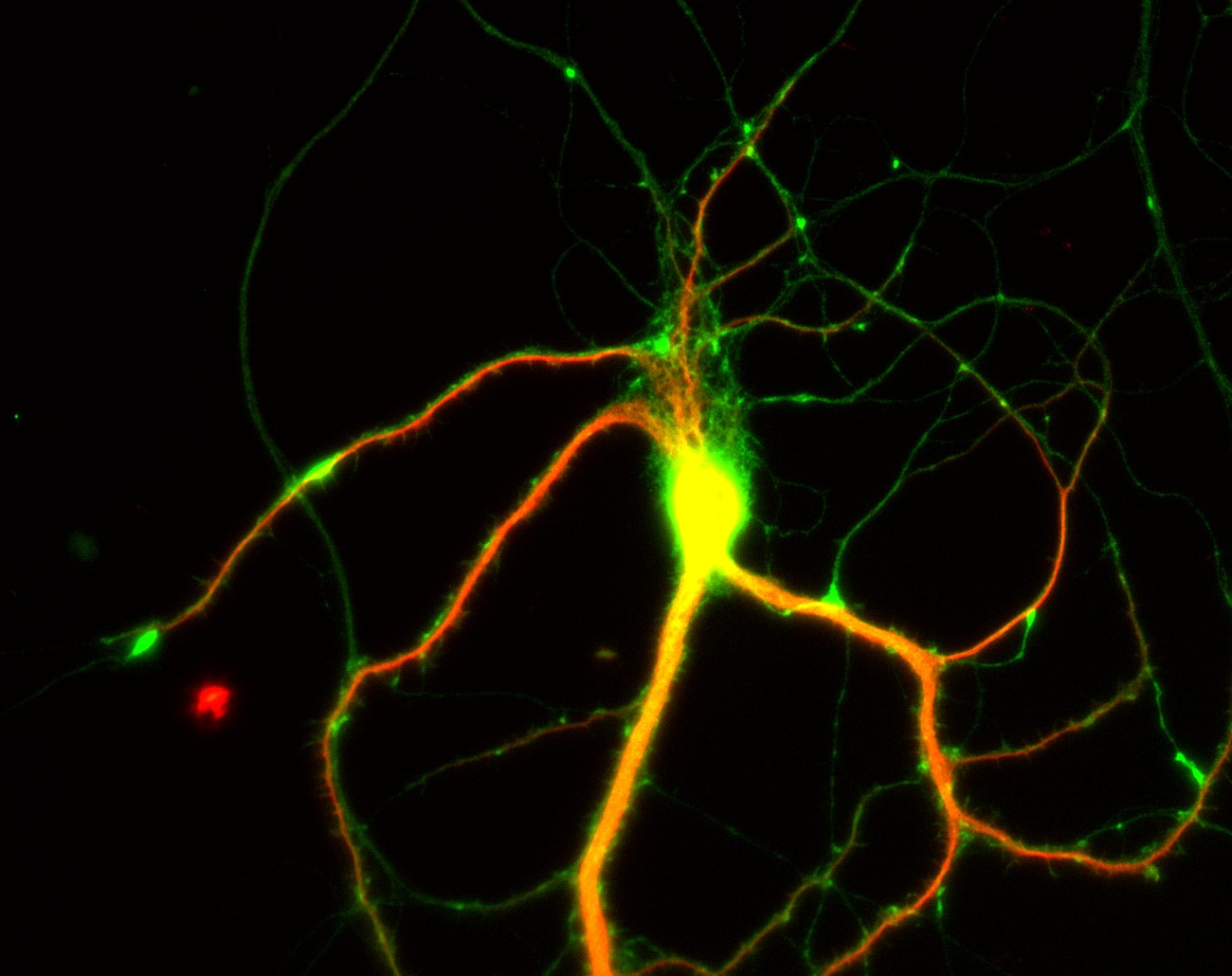Free online library of images, videos, and animations of cells now available
December 16, 2010

Rat hippocampal neurons immunostained for MAP2 (red) to reveal the dendritic arbor and localization of Kinase II (green), which is involved in regulating synaptic plasticity (The Cell image library)
The American Society for Cell Biology has launched The Cell: An Image Library.
This online resource of digital images was first made publicly available on August 9, 2010, and is now fully operational and freely available to multiple end users across research, clinical, educational and public communities internationally.
The Cell library is an easily accessible public resource database of images, videos, and animations of cells from a variety of organisms.
The purpose of this database is to advance research on cellular activity with the ultimate goal of improving human health; and to provide a public educational resource that contributes to the understanding of the wonders of the biology of living organisms. It currently houses nearly a thousand images.
Investigators from around the world will contribute image data—single frames, multi-dimensional stacks, and time lapse videos. Researchers use dozens of different microscope hardware and software instruments to produce specialized three-dimensional images of cells. To access these myriad data formats.
The Cell uses technology developed by OME (http://openmicroscopy.org), and customized through OME’s commercial arm, Glencoe Software Inc. The Cell is based on Bio-Formats and OMERO, open source enterprise-level scientific image data access and management systems built by the OME Consortium.
These tools are designed to read and interpret scientific image data and metadata from a wide variety of sources, and enable annotation, visualization and sharing of image data.
In 2009, the ASCB was awarded a $2.5 million stimulus grant through the National Institutes of Health’s Grand Opportunities program to build this novel multi-dimensional image library of scientific images of cells and their constituents.
Adapted from materials provided by the American Society for Cell Biology